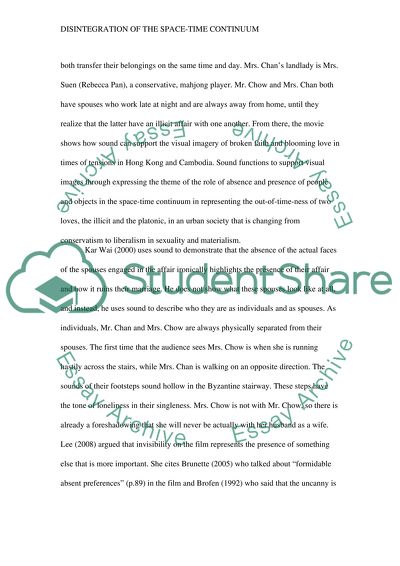Cite this document
(“Absence and Presence and the Disintegration of the Space-Time Essay”, n.d.)
Absence and Presence and the Disintegration of the Space-Time Essay. Retrieved from https://studentshare.org/visual-arts-film-studies/1649100-absence-and-presence-and-the-disintegration-of-the-space-time-continuum-in-kar-wais-2006-in-the-mood-for-love
Absence and Presence and the Disintegration of the Space-Time Essay. Retrieved from https://studentshare.org/visual-arts-film-studies/1649100-absence-and-presence-and-the-disintegration-of-the-space-time-continuum-in-kar-wais-2006-in-the-mood-for-love
(Absence and Presence and the Disintegration of the Space-Time Essay)
Absence and Presence and the Disintegration of the Space-Time Essay. https://studentshare.org/visual-arts-film-studies/1649100-absence-and-presence-and-the-disintegration-of-the-space-time-continuum-in-kar-wais-2006-in-the-mood-for-love.
Absence and Presence and the Disintegration of the Space-Time Essay. https://studentshare.org/visual-arts-film-studies/1649100-absence-and-presence-and-the-disintegration-of-the-space-time-continuum-in-kar-wais-2006-in-the-mood-for-love.
“Absence and Presence and the Disintegration of the Space-Time Essay”, n.d. https://studentshare.org/visual-arts-film-studies/1649100-absence-and-presence-and-the-disintegration-of-the-space-time-continuum-in-kar-wais-2006-in-the-mood-for-love.


